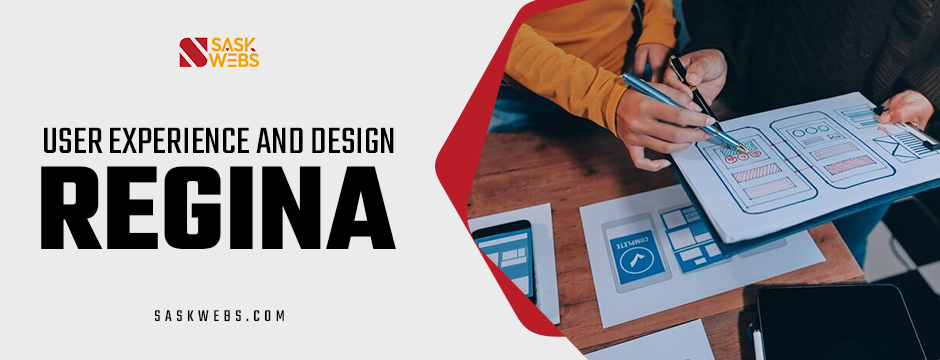
In today’s digital-first world, a website is more than just a virtual storefront — it is often the very first impression a brand makes on visitors. Whether your audience is in Regina, elsewhere in Saskatchewan, or across Canada and beyond, the design of your website and the quality of its user experience (UX) can determine whether someone stays, explores, converts, or bounces. The modern web user expects clarity, speed, responsiveness, accessibility, and emotional resonance. They want to feel welcomed, guided, and confident that their time on your site is worthwhile.
But achieving that level of experience is not trivial. It requires striking a balance between aesthetic vision, functional flow, technical performance, and user empathy. In this article, we’ll explore best practices in modern web UX and design — the guiding principles, common pitfalls, and what separates a “good enough” site from one that delights users. Whether you’re creating a brand-new site or redesigning an existing one, these principles of User Experience and Design Regina can help inform decisions at every stage — from layout, typography, and colour systems to microinteractions, accessibility, and performance considerations.
Centre on the User: Empathy, Personas, and Scenarios
A foundational User Experience and Design Regina principle is to design for real people. Before drawing mockups:
- Develop personas: Create archetypes of your typical users: their goals, frustrations, tech savviness, devices, accessibility needs, and emotional mindset. For example, Regina-based users may include local business owners comparing providers, community members checking local events, or rural users with slower internet.
- Map user journeys: Walk through how each persona arrives (e.g. via social link, search, referral), what paths they might take, decision points, friction zones, and ideal outcomes.
- Focus on primary tasks: For example, “find service offering,” “get a quote,” “view portfolio,” or “contact us.” Make these tasks easy, visible, and minimal in friction.
Designing based on real user goals reduces guesswork, prioritises features, and helps resolve tradeoffs (e.g. aesthetics vs speed) in favour of what users truly value.
Information Architecture and Navigation
A user should never feel lost.
- Clear hierarchy & structure: Use a shallow menu structure, logical categories, and consistent labelling. Avoid deeply nested menus that force too many clicks.
- Progressive disclosure: Reveal details gradually. Present the summary first, and let users drill deeper if desired.
- Breadcrumbs & “you are here” cues: Help orient users — especially on content-rich sites.
- Sticky navigation / secondary navs: Keep the main nav accessible (especially on long-scroll pages), but avoid clutter.
- Search as fallback: If your site has many pages or content items, include a robust search function with auto-completion and filtering.
Visual Hierarchy, Layout & Typography
The way elements are arranged guides the eye.
- F-pattern & Z-pattern scanning: Users scan in predictable ways. Place your key content or CTAs along these scan paths.
- Use whitespace purposefully: Let content “breathe” — don’t crowd everything. Whitespace helps delineate areas, emphasise elements, and reduce cognitive load.
- Typography hierarchy: Define clear typographic scales — headings (H1, H2, etc.), body text, captions. Use contrast (size, weight, spacing) to distinguish importance.
- Consistent visual system: One or two typefaces, consistent colour palette, icon set, and spacing guidelines — this builds coherence and brand identity.
- Responsive grid and fluid layouts: Design with a mobile-first mindset. Content blocks should adapt — columns collapse, images scale, and gestures are considered.
Colours, Imagery & Branding
Website designers Regina isn’t decoration — it’s functional communication.
- Accessible colour contrast: Follow WCAG guidelines (4.5:1 for normal text, 3:1 for large text) to ensure readability for users with visual impairments.
- Meaningful colour usage: Use colour to signal state (hover, active, disabled), guides (links, buttons), and feedback (errors, success). Avoid relying on colour alone to convey meaning (add icons or text).
- High-quality imagery: Use images, illustrations, or icons that feel authentic and relevant. Avoid generic stock photos when possible. Optimise for web (compressed formats, responsive sources).
- Brand consistency: Your site should reflect your brand identity — tone, mood, logo usage, and visual style — in a consistent way across pages.

Performance, Load Speed & Mobile Optimisation
A beautiful design fails if it arrives too slowly.
- Lazy loading & image optimisation: Use modern formats (e.g. WebP), responsive srcset, and only load images when needed.
- Minify CSS / JS, bundle assets: Reduce HTTP requests, compress files, and remove unused code.
- Use caching & CDNs: Leverage browser caching and content delivery networks to deliver content faster, especially for distant users.
- Efficient JavaScript usage: Avoid heavy libraries or unnecessary scripts. Defer noncritical JS.
- Mobile-first design & testing: Because many users browse via mobile, ensure layouts, touch targets, and interactions are comfortable on small screens.
Microinteractions & Feedback
Small interactions make the experience feel alive.
- Hover/focus states: Buttons, links, and interactive elements should visibly respond on hover, focus, and active state.
- Loading indicators & skeleton screens: When content takes time to fetch, show progress cues or placeholders (skeleton screens).
- Animated transitions: Subtle animations (fade-ins, sliding panels) can guide the eye and soften abrupt changes — just don’t overdo them.
- Validation & error messaging: Provide immediate, clear feedback when a user interaction fails (e.g. form validation). Guide users to correct errors.
Accessibility & Inclusive Design
Designing for everyone is both ethical and practical.
- Semantic HTML & ARIA roles: Structure content with meaningful tags (e.g. <nav>, <header>, <main>) and support screen readers.
- Keyboard navigation: Ensure users can navigate using Tab, arrow keys, and that focus states are visible.
- Alt text & image descriptions: Provide alternative text for images to assist visually impaired users.
- Responsive typography & scalable UI: Allow users to zoom / scale without layout breakage.
- Color-blind considerations: Don’t rely solely on colour differences; include textures, shapes, or labels to differentiate.
Wrapping Up
Creating an engaging, performant, accessible, and brand-aligned website requires more than simply choosing a pretty template. It demands User Experience and Design Regina thinking, attention to detail, and ongoing iteration. The best websites guide users effortlessly to their goals while reflecting your brand’s identity and values.
If you’re looking for professional assistance to design or redesign your site—with a focus on user experience, visual polish, technical excellence, and conversion optimisation—consider leveraging expert services. I invite you to explore SaskWebs to see how a dedicated design team can help bring your vision to life and ensure your website delivers real results.
Frequently Asked Questions
User Experience and Design Regina ensures that visitors can navigate your site easily, find information quickly, and enjoy interacting with your brand online. A well-structured UX builds trust, improves engagement, and leads to higher conversions.
A professionally designed website helps Regina-based businesses stand out locally and online. It creates a strong first impression, enhances credibility, and drives more leads and sales through better usability and branding.
Key elements include responsive layouts, fast load speeds, accessible colour contrast, clear typography, strong CTAs, and mobile-first design principles. These features align with modern user expectations and SEO requirements.
Ideally, you should refresh your website every 2–3 years to keep up with design trends, technology updates, and changing user behaviour. Regular audits and incremental updates can extend this lifecycle effectively.
You can get expert web design and UX services through Saskwebs. Our team specialises in modern, responsive, and high-converting websites tailored for businesses in Regina and beyond.






